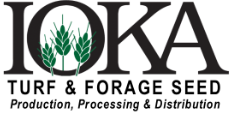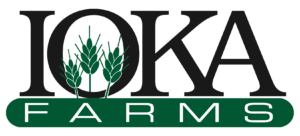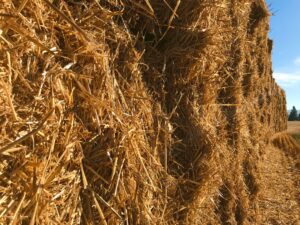
In the land of Pinterest and Etsy, “hay” and “straw” are a synonymous crafting and decor medium. In the land of agriculture, “hay” and “straw” are actually very different.
At first glance, they do seem quite similar. Both begin the same way as a field crop and look dry towards the end; they have about 15% moisture or below at this point. Then they are compressed into various sized bales for the end user. Overall, to the untrained eye they look like a bale of dried plant material.
However, look a little closer and you’ll find two very different products. 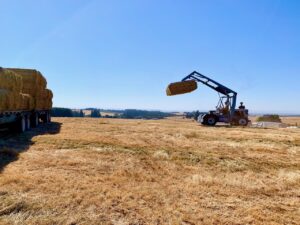 Straw is the by-product of seed or grain production, and is the stalk of the plant that is left after the seed has been harvested. As the plant matures, the fiber content increases and the protein content decreases. What is left has very little nutritional value, as the plant has spent all of those stores producing the seed, leaving behind essentially a hollow stem. Primarily, straw is used for
Straw is the by-product of seed or grain production, and is the stalk of the plant that is left after the seed has been harvested. As the plant matures, the fiber content increases and the protein content decreases. What is left has very little nutritional value, as the plant has spent all of those stores producing the seed, leaving behind essentially a hollow stem. Primarily, straw is used for
animal bedding, but can also be used for feed because of the high fiber content it provides. Much of the straw collected in Oregon is exported to Japan and Korea for dairy and beef cattle feed (SOURCE). Some unique uses of straw include mulch for your garden or when seeding your lawn, stuffing for a mattress, making baskets and hats, fuel source for bio-energy, building material for houses, and decoration for front porches.
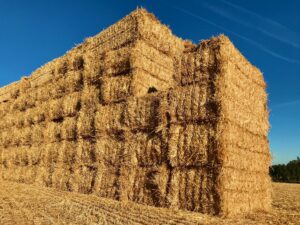 Hay on the other hand is grown for the very specific purpose of producing animal feed. Hay is generally grass or legume, or a combination of both. It is cut before the plant switches to seed production in order to maintain maximum protein content and nutritional value. Hay is made of the entire plant, including the leaves, stems, flowers, and sometimes immature seeds. Common types of grass hay include ryegrass, endophyte free tall fescue, timothy, orchardgrass and bromes, while legume hay typically consists of alfalfa and clover.
Hay on the other hand is grown for the very specific purpose of producing animal feed. Hay is generally grass or legume, or a combination of both. It is cut before the plant switches to seed production in order to maintain maximum protein content and nutritional value. Hay is made of the entire plant, including the leaves, stems, flowers, and sometimes immature seeds. Common types of grass hay include ryegrass, endophyte free tall fescue, timothy, orchardgrass and bromes, while legume hay typically consists of alfalfa and clover.
So remember that the biggest difference between hay and straw is that hay is typically harvested before plants make seed and are just growing leaves, and straw is the low quality stems left behind with little nutritional value.
Sources https://www.celebrateoregonagriculture.com/ag-exports/
